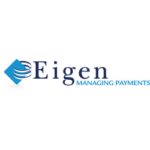 The room rent you charge for your hotel rooms plays a very important role in your business, especially when you are trying to sell more rooms. A misguided room pricing strategy will not help, as it can’t attract guests to book with you. Pricing your rooms at the right price at the right time will help you sell more rooms and boost your occupancy, which ultimately leads to increased profitability.
The room rent you charge for your hotel rooms plays a very important role in your business, especially when you are trying to sell more rooms. A misguided room pricing strategy will not help, as it can’t attract guests to book with you. Pricing your rooms at the right price at the right time will help you sell more rooms and boost your occupancy, which ultimately leads to increased profitability.
What is the importance of hotel room pricing strategy?
The answer to this question is quite simple – if you charge too high, you will lose customers to your local competition that offers more reasonable rates for essentially the same type of accommodation and services. However, if your rates are overly competitive and you charge less, you will end up losing money. In this case, you might get more guests, but it will be difficult to cover your operational costs.
Determining the right hotel room rate is not an easy task. The complexity comes as you consider the many factors that impact room pricing. Some of them are:
- Your room types
- Value of services you offer
- Your occupancy
- Your guest segments
- Demand and supply in the local market
- Competition pricing
- Seasonality
- Even the day of the week
Let’s look at some of the hotel room rate pricing strategies that can help you sell your rooms so that you get to realize maximum room revenue:
1. Forecasting-based pricing
It is all about tweaking your hotel room price while forecasting the number of rooms that will be available for future dates. For this, you should have a clear understanding of your hotel’s historical data – occupancy data for the last couple of months and for the same period during the previous year. This will give you an idea on how the occupancy might look on a given date. Proper forecasting allows you to make necessary changes in your room rates based on demand and expected occupancy. Note: your forecast will also depend on the increase or decrease in travelers coming to your locality or an increase or decrease in your competitors in your segment.
2. Competitor-based pricing
You will be able to come up with a competitor-based hotel room rate pricing strategy only when you understand the rates your competitors are selling their rooms at. When we talk about competition, consider hotels that come in your segment and star category. Look at their rates for each room category and try to find out how travelers react to the same. See if they are able to attract guests with better pricing and deals. Study their hotel pricing strategy closely to find out when they are increasing or decreasing their room rates and how often they rollout offer/discounts.
You also need to compare your rates with their rates and see if you offer value to your guests. When done and monitored properly, this will help you to understand what customers are already paying and how much they will be willing to pay. Armed with these insights, tweak your hotel room price so that you can sell your rates at competitive rates.
3. Guest segment-based pricing
In this scenario, you can change the price of the same room for different types of guest segments. This is all about selling the same room at different prices to different types of guests. For example, you can charge more for a sea-facing suite room, but at the same time, you charge a little less for a normal suite room on any given date.
When guests see value in your offerings and services, they will not be bothered about what you charge them. Having an impressive online reputation can immensely help you in this context. If you can successfully implement this particular hotel room pricing strategy, it can assist you in realizing more profits and customer satisfaction.
4. Occupancy-based dynamic pricing
An occupancy-based dynamic pricing strategy is a great way to increase room revenue. Make sure that you are pricing your hotel rooms based on supply and demand. You must increase your room rates when demand exceeds supply. For example – if 45 out of 50 rooms are occupied, you can charge more for the remaining 5 rooms. This approach will increase your ADR and RevPAR. Additionally, at low demand seasons, when your occupancy is low, you can charge less for your rooms to attract bookings.
5. Length of stay based pricing
This is also referred to as Best Available Rate by Length of Stay. Under this hotel pricing strategy, you can make changes in your room rates based on both the arrival date and the total duration of a guest’s stay. To come up with the right pricing, you need to understand demand, forecasts, business on the books and even the price sensitivity. You should modify your room pricing either based on maximum length of stay or minimum length of stay to enhance occupancy. The most important thing here is that guests get to pay one rate for their entire stay.
Some other hotel room pricing strategies that can help you are:
- If the check-in day is Wednesday and check out day is Saturday, you can charge more for the Friday night alone. It is simple because weekend rates are usually higher.
- Implement a daily pricing strategy and charge different rates for each night of a guest stay.
- Implement an hourly pricing strategy for rooms that are expected to be sold in the near future – by tomorrow or the day after tomorrow.
- Revise your TA and Corporate contracts at regular intervals based on your ADR, demand, and the performance of your hotel.
- Implement a ‘no refund cancellation policy’ in peak seasons when your occupancy looks good.































